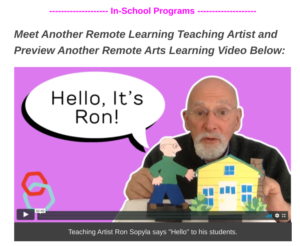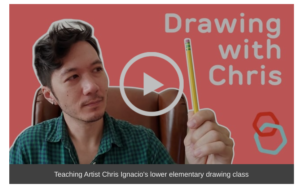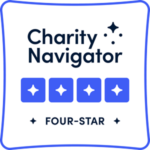
ArtsConnection’s dedicated program mangers and Think Tank team leaders have kept our Teen Programs moving nimbly along throughout these times of uncertainty and change—and our fantastic teen students have helped. The teenagers we’ve worked with all year in Teen Reviewers and Critics, OnTRaC, the Teen Advisory Council and more have jumped right into virtual work as we transitioned to video meetings, their enthusiasm and wish to stay connected allowing us to move our thriving community online with ease. They have often been the ones inspiring us, and this past week’s Virtual Teen Programs Festival offered them a chance to take on leadership roles in which they shone, as they moderated our Artist to Artist panels, made art, and participated in a town hall devoted to activism and art and how to engage creative responses in the mission to shift the conversation about race in America and create a better society for their future. Our professional panelists answered their questions and offered career (and life!) advice, and included Lily Ling, the first female music director for Hamilton (Music Panelist); Raja Feather Kelly, the artistic director of New Brooklyn Theatre (Theater/ Dance Panelist); and Jenée-Daria Strand, curatorial assistant for the Elizabeth A. Sackler Center for Feminist Art at the Brooklyn Museum (Visual Art Panelist). These artists and other luminaries offered advice on topics such as how to make a career in the arts, how to motivate yourself to keep going when things get tough, and the role of higher education in the life of a professional artist. We are not stopping there—our summer program, Map Free City, starts in July, and teens are already gearing up to check out and analyze art, write reviews for our blog The JAR, and make new friends along the way—all online, staying #ArtsConnected until we can all meet up again in person for our next adventures in making, writing, and talking about art.


“I am so grateful that I was able to continue this program, even remotely. It just goes to also show how much art is available for a larger population; art you don’t need to pay for, art that is on online magazines, art that is on YouTube, on Instagram, etc. To me knowing this availability has made me more curious about digging into the internet on my own time. There are so many people, who no longer live today, who have been revolutionaries and created their own worlds through art. I found excitement in discovering the narratives of these artists, of revolutionaries right now, of people my own age and have been thinking about ways in which I could display and emphasize the story I have to tell, with my own art.”
–Lara S., 11th grade, Teen Reviewers and Critics student





